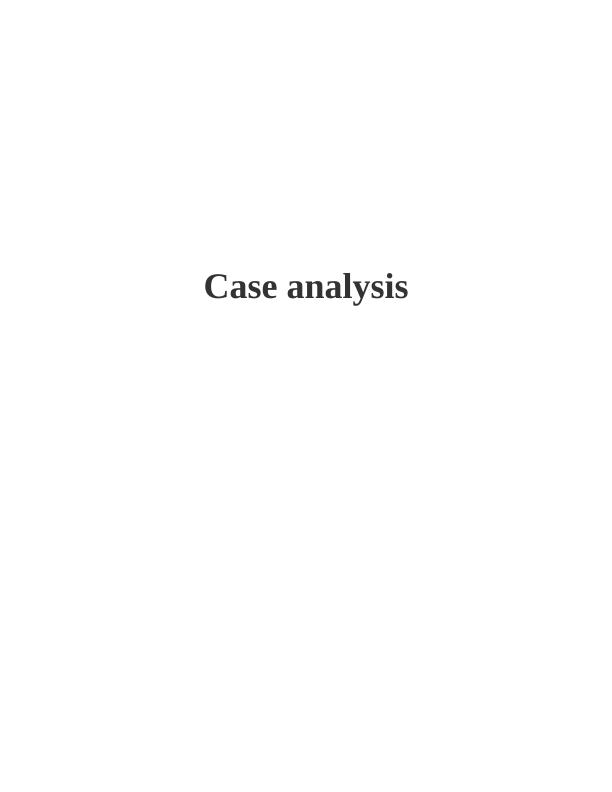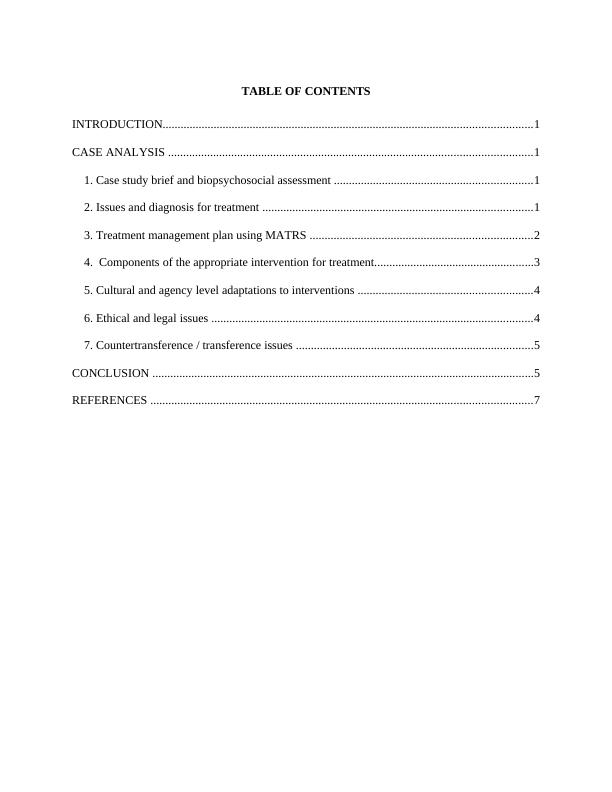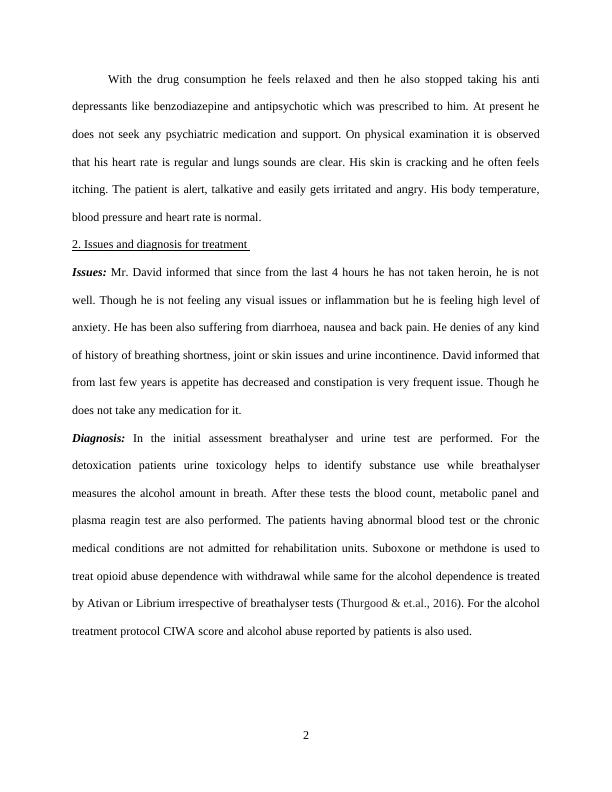Ask a question from expert
Case Study Brief and Biopsychosocial Assessment
15 Pages2604 Words290 Views
Added on 2021-02-22
Case Study Brief and Biopsychosocial Assessment
Added on 2021-02-22
BookmarkShareRelated Documents
Case analysis

TABLE OF CONTENTSINTRODUCTION...........................................................................................................................1CASE ANALYSIS .........................................................................................................................11. Case study brief and biopsychosocial assessment ..................................................................12. Issues and diagnosis for treatment ..........................................................................................13. Treatment management plan using MATRS ..........................................................................24. Components of the appropriate intervention for treatment.....................................................35. Cultural and agency level adaptations to interventions ..........................................................46. Ethical and legal issues ...........................................................................................................47. Countertransference / transference issues ...............................................................................5CONCLUSION ...............................................................................................................................5REFERENCES ...............................................................................................................................7

INTRODUCTIONSubstance use disorder (SUD) or substance abuse is defined as excessive or repetitive useof specific drugs and alcohol which affects cognitive, behavioural as well as control ability of anindividual (Moos, 2018). The use of both legal and illegal drugs as SUD is increasing amongyoung people affecting their routine life and health efficiency. CASE ANALYSIS 1. Case study brief and biopsychosocial assessment Mr. David is 30 year old Caucasian male who has been presented to rehabilitation facilityand outpatient detoxification. For the last 3 weeks he has being using 4 cans of beer, 10 bags ofheroin and heavy dosage of cocaine as well. Due to substance over dosage patient has limitedcontrol on behaviour and thus has been indulged in various activities of violence. Instead ofgoing to jail for the law violations patient and his family desire to go for probation treatmentprogram. Mr. David is married and lives with his wife and has been referred by his probationofficer. He is unemployed and thus he spends most of time with his friends. David stated that for 5-6 years he was also addicted of marijuana but due tounemployment stress and regular issues with his wife he started taking heroin. When he firststarted taking drugs his wife was aware but she did not support him. For the financial support heused to take help from his parents who are also well aware of this addiction. David does not haveany past history of hospitalisation but few days ago due to overdose of heroin his wife found himunconscious and thus he was admitted to hospital. It has been also reported by David that he hasbeen continuously struggling with mild anxiety, sever depression from adolescents. He even hadsuicidal thoughts but never attempted. 1

With the drug consumption he feels relaxed and then he also stopped taking his antidepressants like benzodiazepine and antipsychotic which was prescribed to him. At present hedoes not seek any psychiatric medication and support. On physical examination it is observedthat his heart rate is regular and lungs sounds are clear. His skin is cracking and he often feelsitching. The patient is alert, talkative and easily gets irritated and angry. His body temperature,blood pressure and heart rate is normal. 2. Issues and diagnosis for treatment Issues: Mr. David informed that since from the last 4 hours he has not taken heroin, he is notwell. Though he is not feeling any visual issues or inflammation but he is feeling high level ofanxiety. He has been also suffering from diarrhoea, nausea and back pain. He denies of any kindof history of breathing shortness, joint or skin issues and urine incontinence. David informed thatfrom last few years is appetite has decreased and constipation is very frequent issue. Though hedoes not take any medication for it. Diagnosis: In the initial assessment breathalyser and urine test are performed. For thedetoxication patients urine toxicology helps to identify substance use while breathalysermeasures the alcohol amount in breath. After these tests the blood count, metabolic panel andplasma reagin test are also performed. The patients having abnormal blood test or the chronicmedical conditions are not admitted for rehabilitation units. Suboxone or methdone is used totreat opioid abuse dependence with withdrawal while same for the alcohol dependence is treatedby Ativan or Librium irrespective of breathalyser tests (Thurgood & et.al., 2016). For the alcoholtreatment protocol CIWA score and alcohol abuse reported by patients is also used. 2

End of preview
Want to access all the pages? Upload your documents or become a member.
Related Documents
Substance Use Disorder Assignment Reportlg...
|12
|2966
|14
A Mental State Examination Name of the University Student Name: Mr. Joneslg...
|6
|1764
|82
Chronic Depression | Case Study Analysislg...
|12
|3046
|22
Cognitive Behavioral Therapy for Depression in Dementia Patientslg...
|7
|1866
|384
Handling Mental Health Disorders: Chung, A Case Studylg...
|5
|1011
|415
Case Study and Critiquelg...
|10
|2731
|22